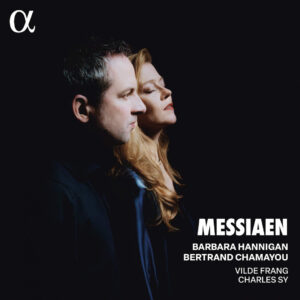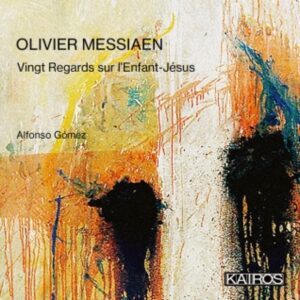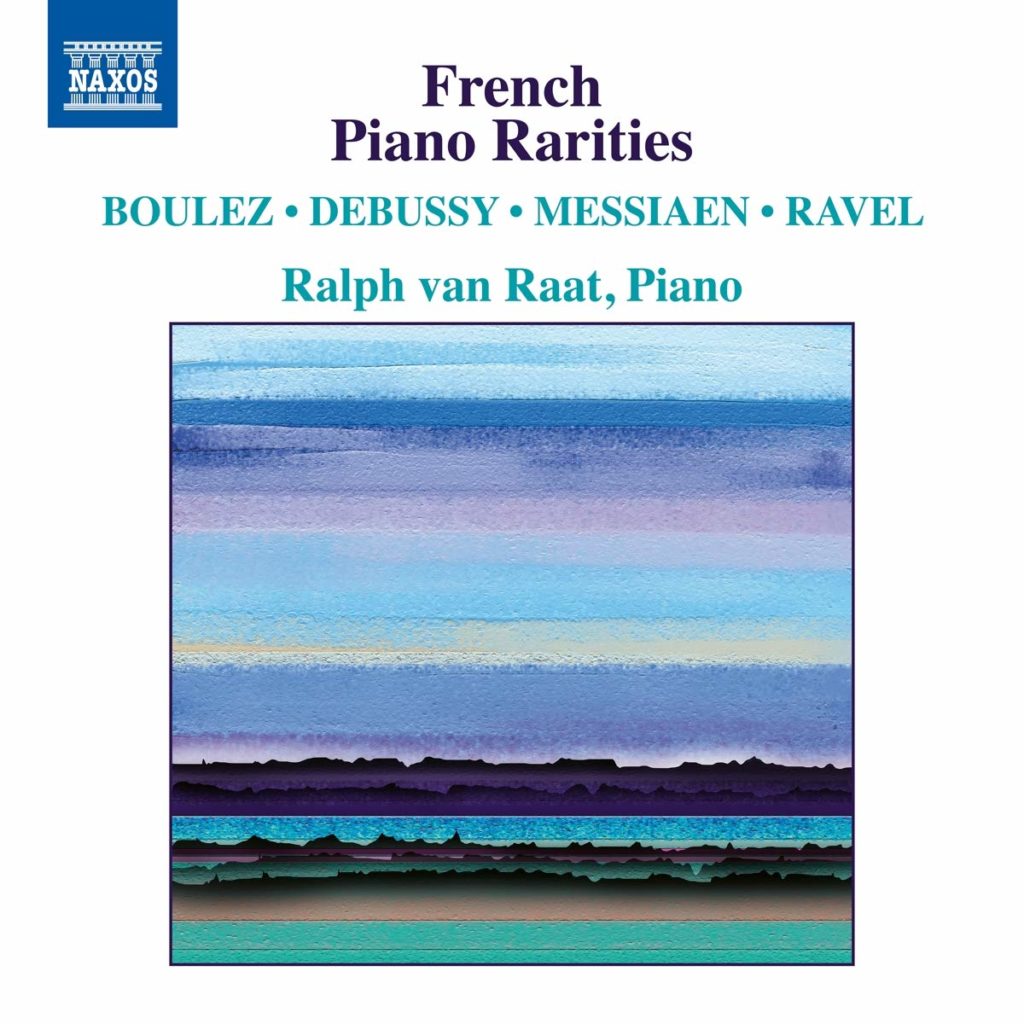Messiaen
Barbara Hannigan, soprano
Bertrand Chamayou, piano
Charles Sy, tenor; Vilde Frang, violin
Alpha (ALPHA1033, 2024)
Soprano and conductor Barbara Hannigan is an extraordinarily talented and versatile performer. Bertrand Chamayou is a superlative player of the French repertoire. Putting the two together in a recital of vocal works by Olivier Messiaen is inspired programming. The CD’s gestation is detailed in Hannigan’s program note, which describes the two artists’ first meeting and subsequent decision to collaborate. The soprano’s longtime duo partner, Reinbert de Leeuw, was too ill to continue performing, and by the time that Messiaen was recorded, it was after his passing. The sessions were done on de Leeuw’s piano at his home, a fitting tribute. Hannigan’s first impression of Chamayou’s playing was its “liquescent legato,” which she would emulate when they performed. This is certainly the case on Messiaen, where the soprano’s sound seems to celebrate a sense of luxuriant line.
The program consists of two song cycles, Chants de Terre et de Ciel (1938) and Poèmes pour Mi (1937), and the scene La Mort du Nombre (1930). All have texts written by the composer, with imagery and reference points taken from the New Testament. Chants de Terre et de Ciel, “Songs of Earth and Heaven,” is substantial, containing six songs but lasting over a half hour. The music celebrates the birth of his only son, Pascal. It begins with Bail Avec Mi, (pour ma femme), “A Pact with Mi (for my wife).” Mi was Messiaen’s nickname for his wife Claire Delbos, a composer in her own right whose works he championed. It has the quality of a recitative, the piano playing birdsong adornments. The rest of the cycle concerns Pascal, in the next three songs as a celebration of his arrival and life. The last two songs take a turn. Minuit pile et face (pour la Mort), “Midnight Heads and Tails (for Death),” is a nightmarish view of death, and it is followed by an ecstatic vision of the afterlife, Résurrection (pour le jour de Pâques), “Resurrection, for Easter Day.” These last two might seem incongruous, but what parent doesn’t fear the death of their child? And Messiaen devotedly looks to the promise of the Resurrection; he hopes and trusts that it will be experienced by his child.
Poèmes pour Mi is dedicated to Delbos. It is about their romantic love and, as the cycle proceeds, a sense of the agape love that embodies both families on earth and the family of believers in union with the divine. The nine songs are split into two books, the first consisting of four and the second of five. This helps to underscore the move from eros to agape, from earthly to spiritual love. Messiaen recommended that the part be for a dramatic soprano, which is not how I would describe Hannigan’s voice. However, she declaims the forte passages strongly without ever pushing, maintaining the aforementioned liquescent legato. The piano part requires frequent shifts in demeanor, as Messiaen’s predilection for composing blocks of sound rather than formal throughlines is omnipresent. Possessing a seemingly endless reservoir of resources, Chamayou provides a different touch and timbre for each new section. There are several recordings of this cycle that I admire. In my estimation, Hannigan and Chamayou’s rendition has significant differences in approach but equals the benchmark recording by Phyllis Bryn-Julson and Mark Markham (Music and Arts 912).
La Mort du Nombre (The Death of the Number) includes two guest artists, tenor Charles Sy, a frequent collaborator of Hannigan’s, and violinist Vilde Frang, acquainted with Chamayou but new to working with the soprano. Both acquit themselves memorably in this comparative rarity from Messiaen’s early catalog. In the part of the Second Soul, Sy plaintively sings a text floridly rich with allegory about being kept distant from God. The First Soul, sung by Hannigan, urges her counterpart to take courage and stay the course, gently declaiming a recitative of koan-like aphorisms. Chamayou is then given a virtuosic part to accompany Sy. Frang follows with an interlude that is accompanied by music in the piano filled with the coloristic harmonies Messiaen used to represent resurrection. Hannigan joins, singing an arioso over whole-tone arpeggiations from the instruments, the poetry describing “an eternal spring.” La Mort du Nombre betrays its youthful naivete in places, but it also reveals a number of musical and textual reference points that would remain constants for Messiaen’s entire career. Well worth reviving.
The recording is distinguished by sterling production values, affording the performers a resonant, yet not overly reverberant, acoustic, that captures even the most subtle dynamic shifts. One hopes that Messiaen is just the beginning of the musical partnership of Hannigan and Chamayou. It is one of my favorite CD’s thus far in 2024.
-Christian Carey, Sequenza 21




